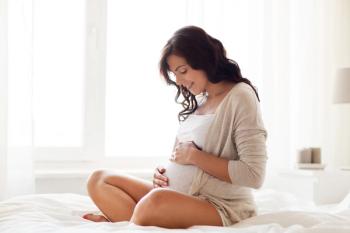
C-section birth linked to increased risk of childhood leukemia
A large Swedish study reveals a 21% higher risk of acute lymphoblastic leukemia in children born via planned cesarean section compared to vaginal delivery.
The odds of future acute lymphoblastic leukemia (ALL) incidence are increased in children born by cesarean section (c-section), according to a recent study published in The International Journal of Cancer on July 4, 2025.1
Expert reassurance on medically indicated c-sections
The data highlighted a 21% increased risk of ALL among children born from c-section vs vaginal delivery. However, the risk remained low, with the excess risk linked to c-sections accounting for approximately 1 case of B-cell acute lymphoblastic leukemia per year.
“C-sections are an important and often life-saving part of obstetric care. We don't want mothers to feel anxious about medically indicated C-sections,” said Christina-Evmorfia Kampitsi, PhD, researcher at Karolinska Institutet and lead study author.
Types of c-section and potential biological mechanisms
Investigators conducted a population-based cohort study to determine the link between unplanned c-section and childhood ALL risk.2 Data from 1982 to 1989 and from 1999 to 2015 were obtained from the Swedish National Medical Birth Register. This period was chosen to allow differentiation between planned and acute c-section.
According to investigators, planned c-section is more common in women with advanced age, obesity, diabetes, preeclampsia, or certain fetal characteristics, while unplanned c-section often occurs following complications in labor. Differences in early microbial colonization between these types of c-section may influence future risks.
Cancer data and covariates
Childhood and adolescent cancer incidence was determined through linkage to the National Cancer Register. Childhood leukemia diagnoses were classified based on the International Classification of Childhood Cancer, third edition. Investigators also obtained data about the immunotypes of children with ALL and their genotype.
Covariates included birth data, assigned sex at birth, health care region of residence at birth, birth weight at gestational age, and birth defect diagnosis. Maternal characteristics were also included, such as age at delivery, infections during pregnancy, and preeclampsia or diabetes diagnoses.
Study population and perinatal trends
There were 2,429,405 participants included in the final analysis, 15.5% of whom delivered through c-section. Of the 375,841 children delivered by c-section, 213,306 were delivered before labor onset, with 136,342 being planned.
Increased rates of being born small or large for gestational age were reported among children born by c-section. These children were also more often born to mothers who were older, overweight or obese, or with conditions such as diabetes mellitus or preeclampsia.
ALL risk by delivery method
Leukemia was identified in 1495 children, including ALL in 1183. An overall hazard ratio (HR) of 1.07 was reported for ALL among children delivered vaginally. In comparison, the HR among those born through planned c-section was 1.21, indicating a higher risk.
This was especially pronounced for B-cell precursor ALL, with an HR of 1.29. These results remained consistent when adjusting for maternal and pregnancy conditions, as well as maternal body mass index.
Pre-labor c-section was linked to B-cell precursor ALL in boys, but not girls, when stratifying by sex, with HRs of 1.41 and 1.09, respectively. Diagnoses were concentrated in children aged 0 to 5 years, with HRs of 1.37 for ALL and 1.35 for B-cell precursor ALL. These results highlighted a link between planned c-section and B-cell precursor ALL.
"Fortunately, ALL is rare. This means that many C-deliveries are needed to obtain a statistically significant result, and it is difficult to obtain such a large sample in a Swedish registry study. However, the results are close to significant… which still makes them relevant,” said Christina-Evmorfia Kampitsi.1
References
- Planned C-sections increase the risk of certain childhood cancers. Karolinska Institutet. July 4, 2025. Accessed July 10, 2025. https://www.eurekalert.org/news-releases/1089383.
- Kampitsi C, Morgensen H, Heyman M, Feychting M, Tettamanti G. Mode of delivery and the risk of lymphoblastic leukemia during childhood—A Swedish population-based cohort study. International Journal of Cancer. doi:10.1002/ijc.70027
Newsletter
Get the latest clinical updates, case studies, and expert commentary in obstetric and gynecologic care. Sign up now to stay informed.











